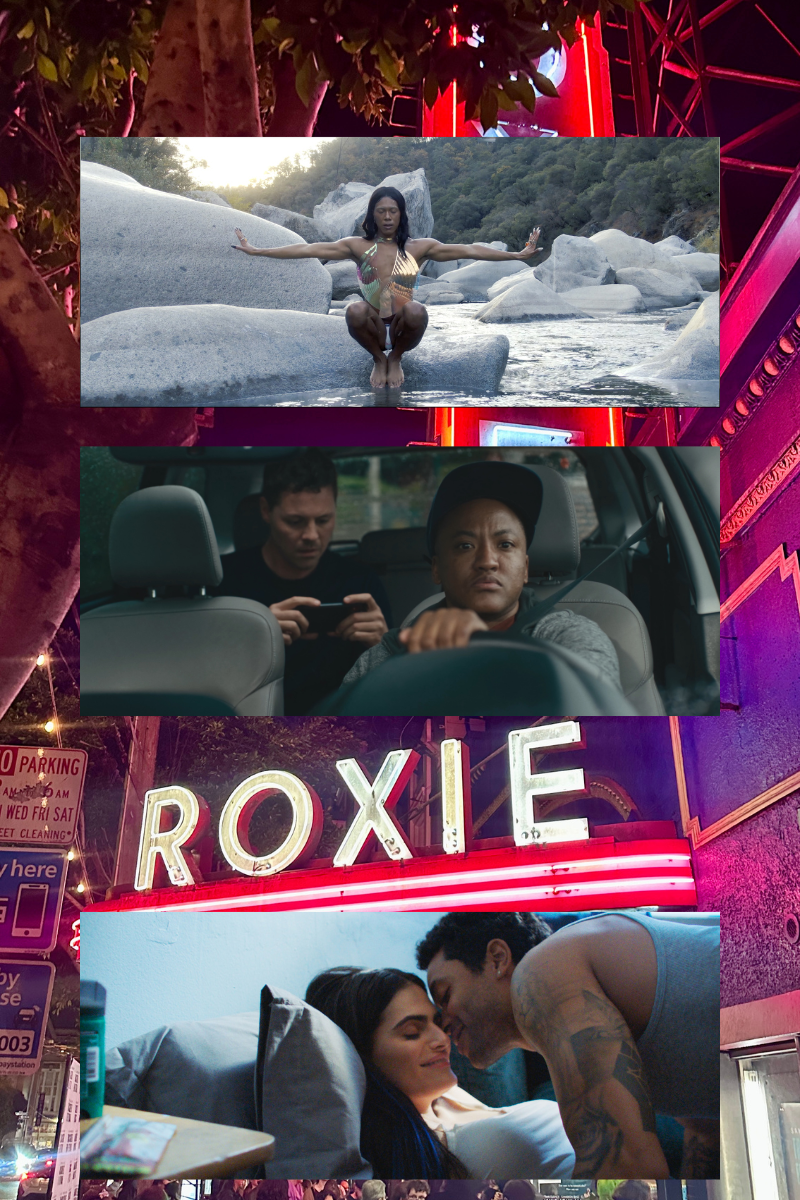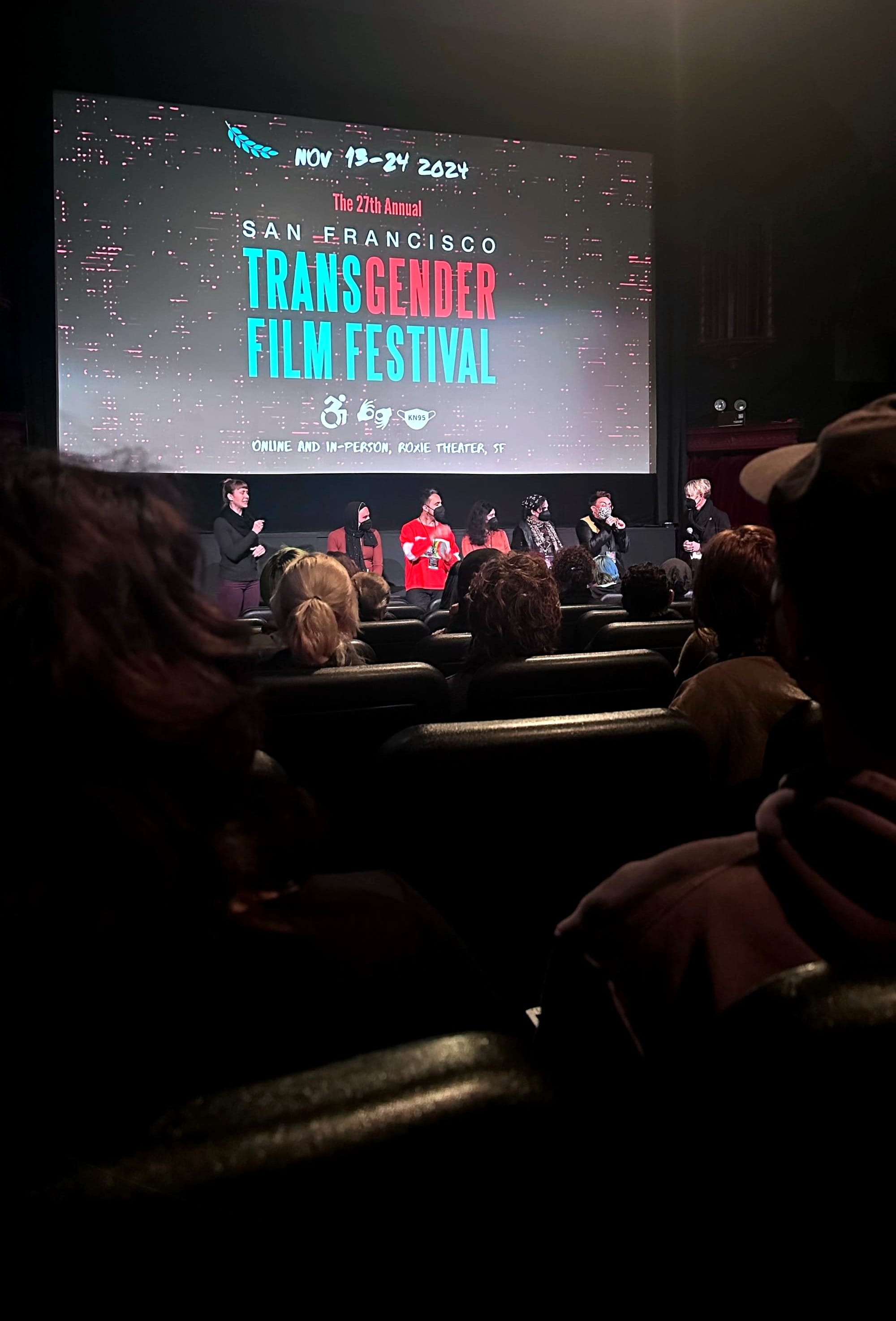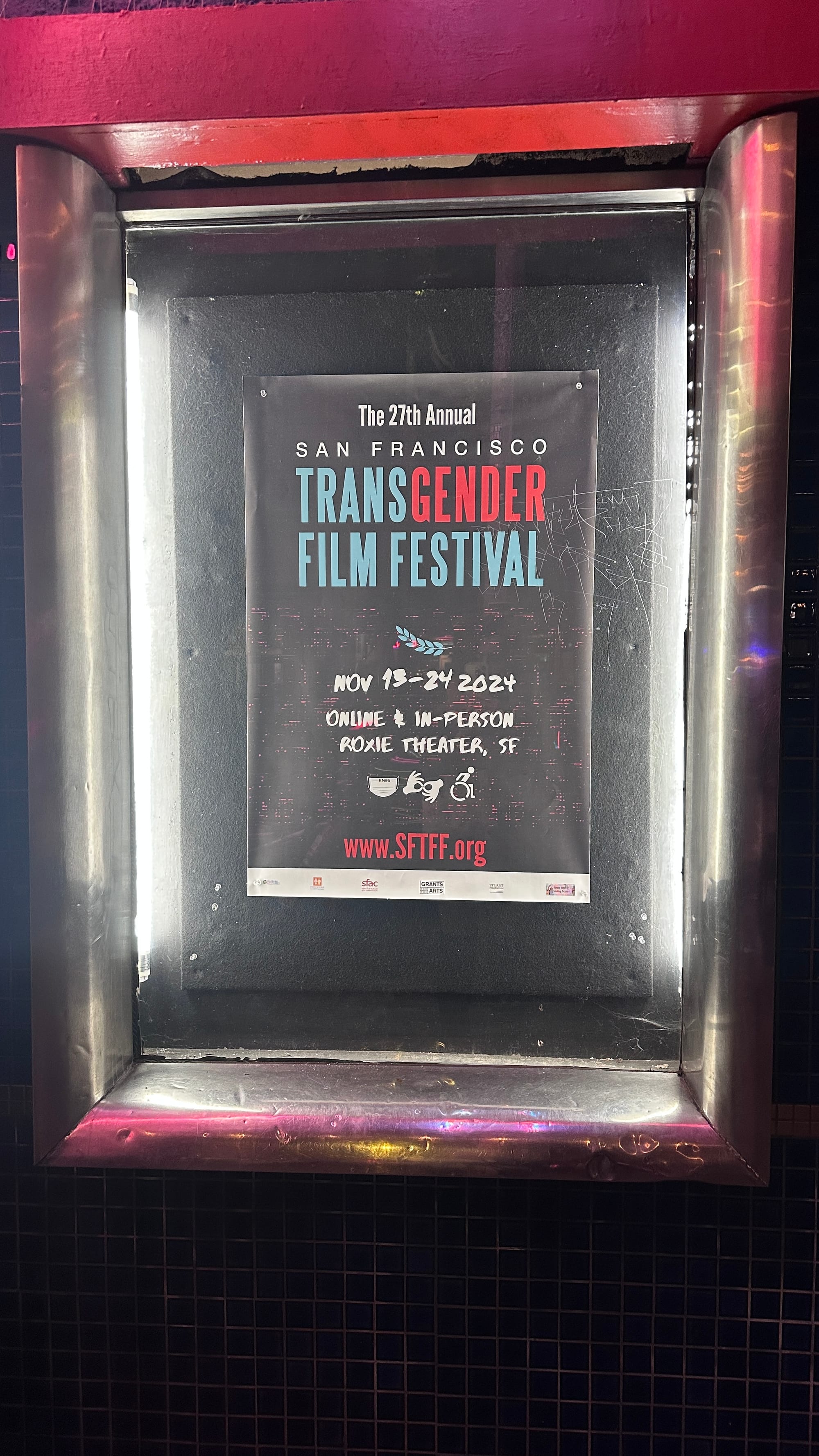27 Years of Punk Energy: How the San Francisco Trans Film Festival Thrives Against All Odds

“Here we are in this moment,” Shawna Virago, Artistic Director of the San Francisco Transgender Film Festival, says to the movie theatre full of LGBTQI and A’s. “But we’re always in this moment.” The crowd roars in cheers and snaps.
This moment that Shawna refers to is this post-2024 election America. The moment when we as trans, gender non-conforming, or nonbinary people feel more threatened by our own goverment than ever. But hasn’t that always been the case for our community?
In a world where queer spaces are increasingly co-opted by corporate sponsorships, the San Francisco Trans Film Festival stands as a rare beacon of authenticity. Celebrating its 27th year, the festival remains the longest-running transgender film festival in the world. What sets it apart isn’t just its longevity, but its unwavering commitment to community, DIY ethics, and non-commercial storytelling.

“I always say we’re like a 1980s punk label,” says Shawna Virago, a musician and artist who confesses she doesn’t like pop music. “Our mission is to show there are alternative ways of making art that don’t rely on mainstream success.”
This ethos, deeply rooted in countercultural values, has kept the festival alive through decades of political and cultural shifts.
“There’s nothing like being in a theater full of other trans people, laughing, crying, and experiencing art together”
Founded in 1997 by Christopher Lee and Alex Austin, the San Francisco Trans Film Festival was born from a need to create a space for trans narratives that mainstream festivals ignored. Today, it continues to prioritize experimental and DIY filmmaking, offering a platform for artists whose visions often fall outside the margins of commercial viability.
“We don’t set themes for the festival,” explains Virago. “Instead, we let the community guide us. The result is a unique co-creation, where every year’s programming reflects the emotions, anxieties, and dreams of trans filmmakers.”
This approach allows the festival to remain fresh, with programming that resonates deeply with filmmakers and audiences.
While neo-capitalism and unsustainable cost of living force many LGBTQ+ organizations to embrace corporate sponsorship, the SF TFF’s choice to stay independent feels radical.
“There are expectations when you take corporate money,” Virago says. “It becomes a transactional relationship where you no longer speak just for the community.”
By refusing sponsorships, the festival retains its autonomy, ensuring its focus remains on the art and the artists. This decision aligns with its punk ethos, allowing it to uplift DIY creators and prioritize the integrity of original founding mission.

Despite its size, the festival has shown remarkable resilience, even during the pandemic. Unlike larger festivals that struggled to adapt, the San Francisco Trans Film Festival pivoted seamlessly to an online format while preserving its intimate, grassroots feel.
“Our small size actually works to our advantage,” says Virago. “We don’t have the overhead that larger festivals do, which makes us more nimble.”
This adaptability has allowed the festival to thrive without compromising its values, a rare feat in today’s arts landscape.
At its core, the festival isn’t just about films—it’s about creating a space where trans people can see themselves reflected and celebrated.
“There’s nothing like being in a theater full of other trans people, laughing, crying, and experiencing art together,” Virago shares. “It’s irreplaceable.”
This communal energy is especially poignant in today’s political climate, where trans lives are under constant attack. The festival serves as a reminder of the resilience and creativity of the trans community, offering a space to find hope amidst the darkness.
At the end of my conversation with Shawna, I asked her who she’d invite—living or dead—to attend the festival. Her first pick was Christopher Lee, one of the festival’s founders, whose punk spirit and vision laid the foundation for what it is today. She also chose Jean-Luc Godard, the original punk filmmaker, for his alternative approach to cinema. Finally, she’d invite the younger selves of every attendee this year, so they could see how far they’ve come and what’s possible. “We made it,” she said, “even when it felt impossible.”
